How Often Do You Have to Upload Users in Toms
If you've tried to buy a Raspberry Pi recently, you'll accept noticed that that is actually quite hard to do right now.
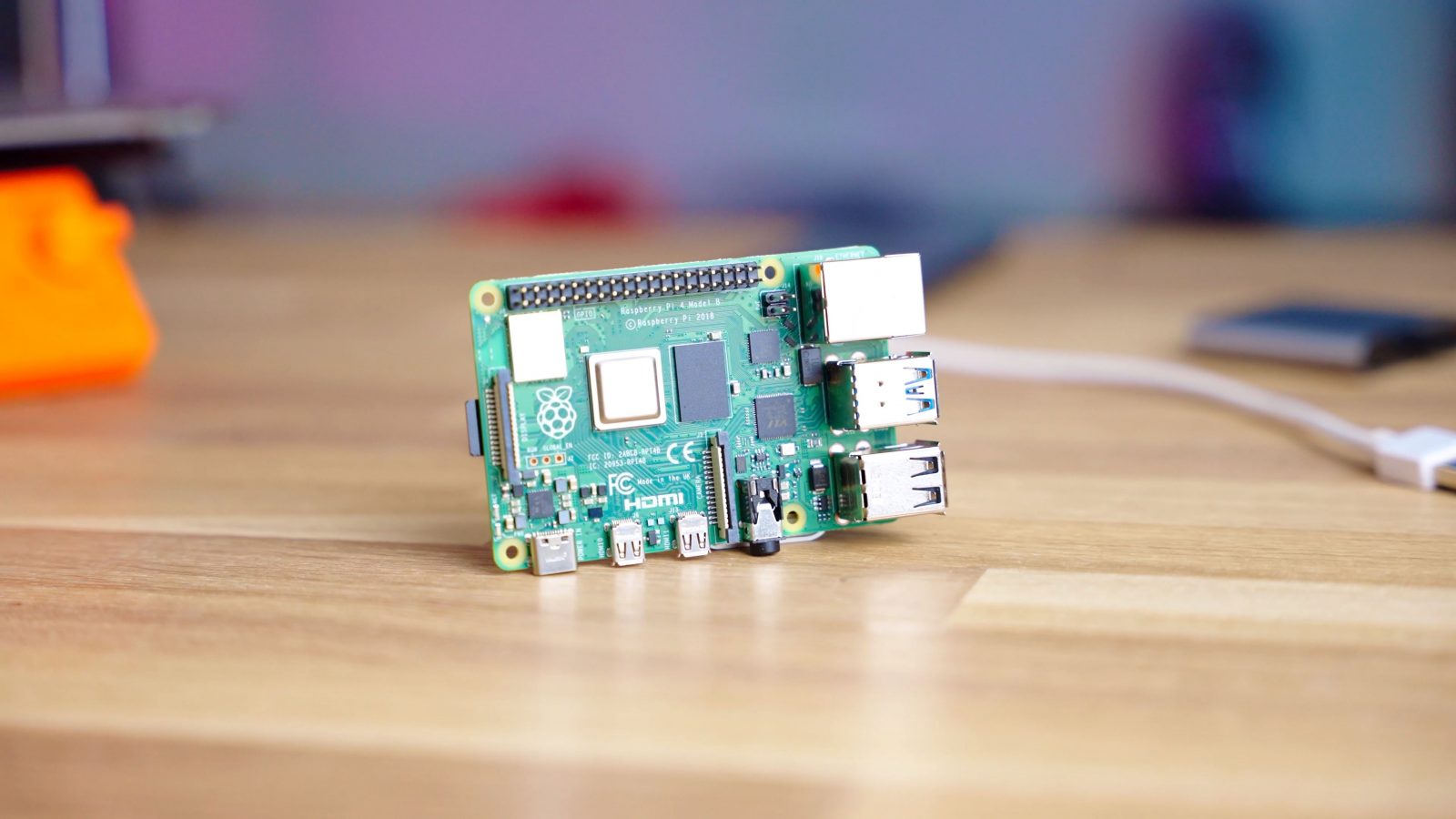
For example, for the 4GB Raspberry Pi iv that used to sell for around fifty bucks, the cheapest offer that really has them in stock is starting to demand scalper prices closer to 100 bucks.
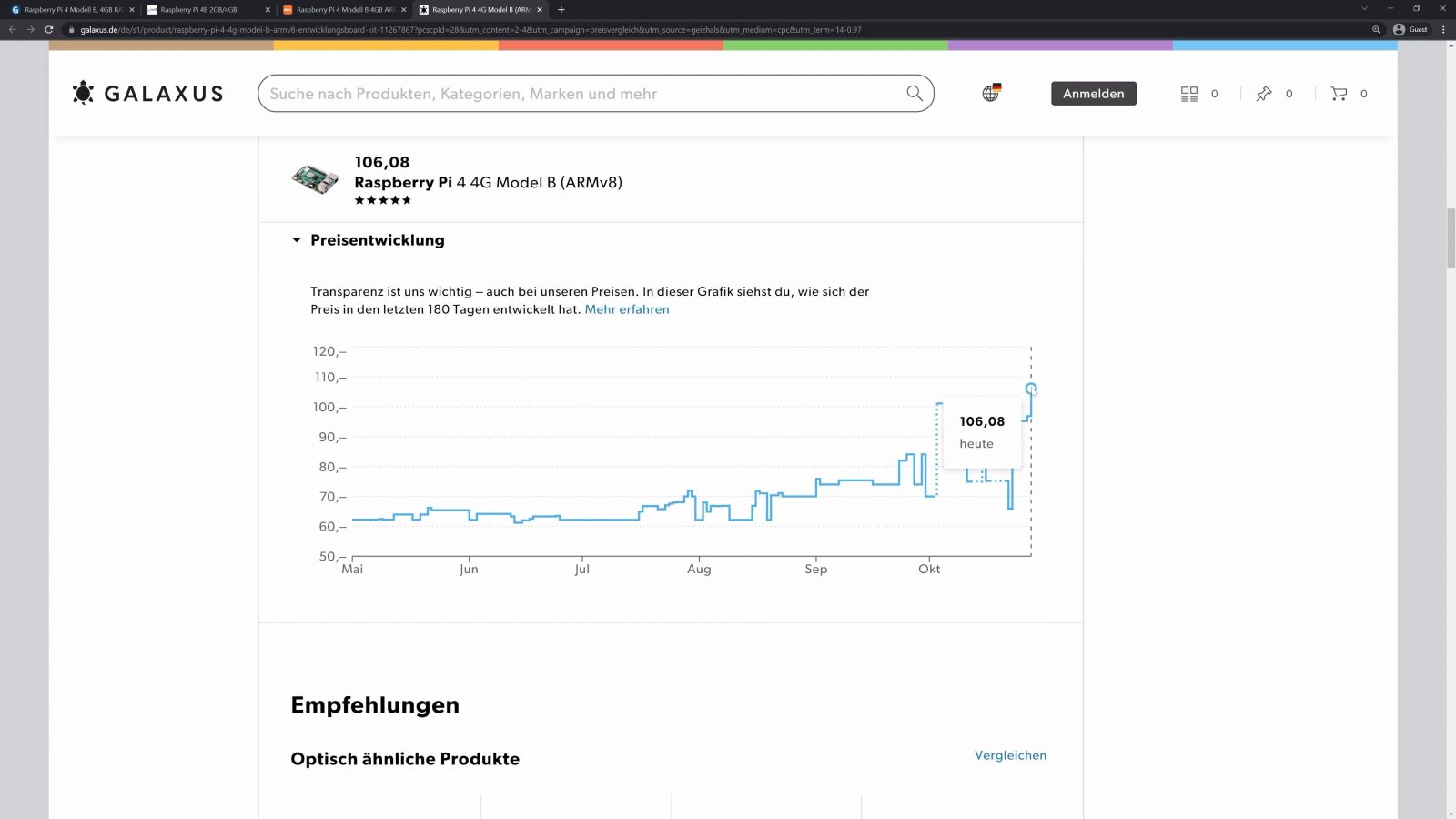
And so if you want to run OctoPrint and nevertheless demand a quality ability supply and USB cablevision, a webcam, and SD bill of fare, y'all could end upward spending close to 150 bucks.
But what if I told you there is a cheaper way. What if yous could run OctoPrint on your old Android phone that you've got sitting around anyway? Or, in fact, you tin can easily buy a make-new telephone or tablet for what you'd be paying for a single Raspberry Pi and that is going to already come with a power brick, USB cablevision, and a much better camera built-in than what you're going to get with whatever webcam. And that's likewise going to give you a way of decision-making OctoPrint without pulling out an additional device.
So today nosotros're going to endeavour out Octo4a, which lets you run a total OctoPrint setup including plugin back up and everything on pretty much any Android phone and the just thing y'all need is a USB adapter like this i for five bucks.
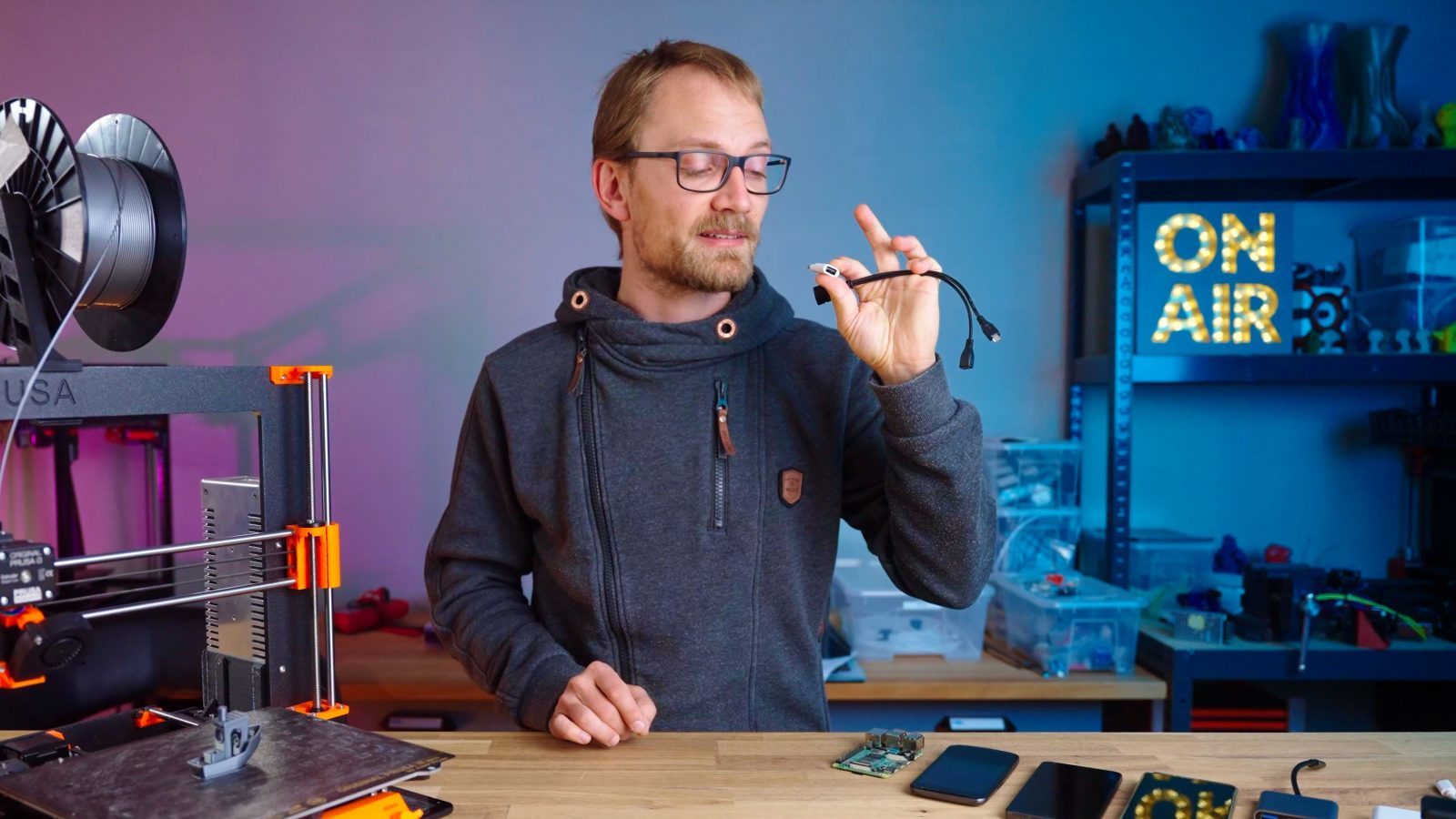
Use your old phones
And so for today's examination, I'grand not going to apply my daily Pixel 5, because I don't desire that to be tied to a printer for hours at a time. Instead, I'm going to be using a Xiaomi Poco F2 I had previously, it's got an 8-core processor clocking up to almost 3GHz, as well as 8 GB of RAM, and so it's hands faster than any Raspberry Pi. Unfortunately, information technology was the 2nd Xiaomi phone that but randomly died on me. This one just doesn't charge anymore, just it's otherwise technically fine, simply the Xiaomi 9T I had earlier that one 24-hour interval merely turned its screen off and never turned it back on and then that one'south done. Thankfully, though, nosotros can pretty easily work effectually the broken accuse feature on the Poco F2 Pro, and so let'southward practice that real quick.
The dorsum is already off, and so all I take to do is take off the plastic shroud, unsnap the connectors like niggling legos, and then solder in a little Li-Ion charger PCB straight to the battery terminals on the dorsum. If you're going to endeavour something similar this, please make sure you know what y'all're doing or ask someone who does, because shorting out or damaging a lithium cell like this can go catastrophically wrong pretty easily.
And so hither we go, a "perfectly" usable Xiaomi Poco F2. I mean, I approximate you could apply information technology like that, it's already abominably unwieldy every bit-is.
As a 2d telephone, for reference as to how former and how weak of a phone you can still utilize I'yard also going to throw in this Google Samsung Galaxy Nexus. This thing is from 2011, has a 1.2GHz dual-core processor and ane GB of RAM. Performance-wise, information technology should be roughly comparable with a Raspberry Pi two, which already isn't exactly recommended hardware for running OctoPrint, specially once you starting time running plugins. And as a heart basis, I'grand as well going to chuck in an LG G6, which was already a very affordable phone brand new, just you tin at present get them used for next to nothing. 2. something GHz quadcore, 4GB of RAM. This should be most comparable or actually a bit faster than a Raspberry Pi 4.
Connect your phone to your printer and go on information technology charged
So, next up, the question is of course, how practice you lot actually connect to your printer, because these phones don't exactly have a USB port that you lot tin can just plug stuff into. Except that, they do. So Android phones by and large support what is called USB-OTG, USB on-the-get, and so with a uncomplicated adapter like this one, y'all can turn the USB port on the telephone into a full-size and fully featured USB host port.
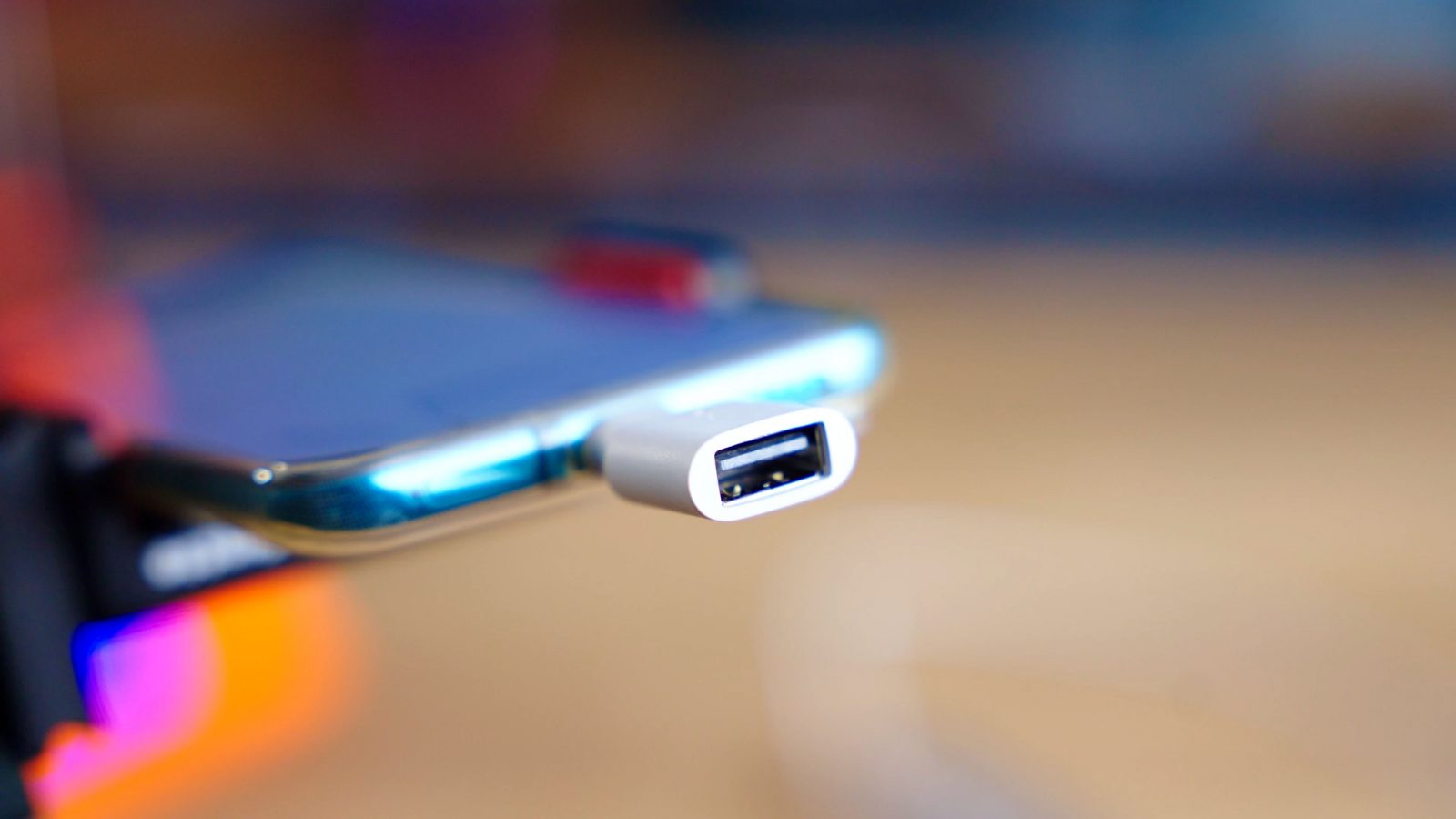
You can actually plug all sorts of stuff into this port, including USB hubs, thumb drives, Ethernet adapters, or webcams if you so desire. Then this is really merely a simple plug-and-play operation. You plug in the adapter, you plug in any device you lot want and y'all're good.
Simply you may accept noticed a little claiming with that: How do you keep your device charged? Considering as is, you're taking upwards the only option of supplying ability to the phone – with the built-in USB port. With the POCO, of class, we take conveniently already worked effectually that by completely bypassing the regular charging circuit, but for normal devices, you can get either a little Y-cablevision for about v bucks, which gives you the USB host port, simply it also lets you lot plug in your regular charger.
Brand sure the cable you're getting actually supports charging the phone, some just supply power to the device you're connecting. For newer devices with a USB-C port, thanks to laptops not having ports anymore, you can now pretty easily find these dongle adapters now for about 10 bucks, which once again, give you lot the host port, a USB-C power delivery accuse port, and often also HDMI, which is probably not going to work on a phone, but you tin also get them with a wired ethernet port born if you don't want to rely on WiFi, and those Ethernet ports will work with your Android phone.
Alternatively, you could also utilize a wireless charging puck and spike that to the back of your telephone, but I have a feeling that that probably isn't the best solution.
Since nosotros're going to be using the telephone's born photographic camera as a webcam, nosotros besides need some fashion to mount it in a convenient location, and you can totally print a mount or employ whatever solution you would take used for a webcam. I took a look through my camera rigging bin and picked out this super clench, magic arm, and leap-loaded phone mount and at present I can position this however I want.
Download, install and configurate Octo4a
Allow'due south motility on to software, and this is actually the easy function. All you've got to do is download the apk for Octo4a from github and install it. An apk is essentially an installer file for Android. Now, your phone is going to ask y'all whether you actually want to install this.
The thing is, typically y'all get your Android apps from the Google Play stores, only because of the fashion Octo4a works, it can't actually exist distributed through the Play store. At present, there, the apps are at to the lowest degree somewhat checked for whether they do malicious stuff or not. If you "sideload" an apk, you're not getting any of those checks anymore, and it'south essentially the same as running some software you downloaded onto your Windows, Mac, Linux, BSD, Solaris, or TempleOS computer. I've written a couple of emails with Filip who makes Octo4a, and he seems similar a overnice guy, but just in case it turns out that he isn't – don't arraign me. Octo4a is free open-source software, and so while that's not a guarantee that the apk is practiced, too, it's a very expert sign at to the lowest degree.
Once you've installed and opened up Octo4a, it'southward going to pull a fresh version of all the files that OctoPrint needs to run besides as OctoPrint itself. There are a couple of things that you lot can – and yet should – configure before you start diving into OctoPrint. So head over to the settings tab and hit "download dependencies" – plugins similar Octolapse demand some extra files to run, and if you don't click this thing, you're going to get an issue when you try to install Octolapse. Next, head downward and configure your camera. I like to employ a 1920×1080 resolution while limiting the fps to xv – this is going to save a lot of bandwidth and processing ability, but you nevertheless get a really crisp image for checking your prints and for time-lapses.
One thing that I got sometimes is that when I had the phone in portrait orientation and and then rotated information technology into landscape while Octo4a was already fully running, it would actually evidence a portrait crop of your frame, and then when you lot ready up your phone, orient information technology correctly, and so plough on the photographic camera server in Octo4a.
If you want, you tin as well enable "start on boot", or fifty-fifty turn on SSH access into the OctoPrint environment, but you're probably not going to need that.
In any case, yous can now open up your favorite browser on your computer, point it to the address and port Octo4a shows you lot and you should go the OctoPrint interface we all know and love.
Now, honestly, from hither on out, the setup is basically the same as with a regular OctoPrint install on a Raspberry Pi. Go through the setup assistant, option a password, etc.
As I said, it'south a full-featured version, it can run plugins, yous can do fourth dimension-lapses, all of that. So for the remainder of the setup, bound over to my latest video on OctoPrint – which I'm going to link to at the cease of this video.
For now, there are a couple more details nosotros're going to need to address in Android so that Octo4a and OctoPrint actually run reliably. So the first thing is adjusting energy-saving options. Especially newer devices with custom Android builds like the Xiaomi devices accept very aggressive power-saving measures once the screen turns off, and so what tin can happen is that Octo4a, and with it OctoPrint, but become completely suspended, which, as y'all might guess, isn't not bad when it's running a impress. Where exactly you're going to find those settings is going to depend on your verbal device, but make sure to check through the app list and bank check the settings for Octo4a, brand sure it's ready to "unlimited" battery use and not to "optimized" or anything similar that; and so go in through the bombardment bill of fare point in settings and, again, make sure to turn off whatsoever "adaptive", "optimized" or "smart" options for the whole device and likewise check specifically for Octo4a over again, and then if your device has some manufacturer-specific smart-ass assistant settings carte, that tin can often also hide some more than power settings that could mess things up.
Octo4a too automatically asks you if you desire to change i of the settings to let it to always run in the background and yous should definitely press "let" here. The next screen to open upward battery settings doesn't really do annihilation withal, but if you dug through the menus and changed everything you could, you lot should be good here.
Just if you so nevertheless run into issues with too aggressive power direction, you could try enabling the option to always leave the screen on while the telephone is plugged in, which you can practice in Android'south developer options, but go on in mind that if your phone has an OLED screen because information technology's going to exit the screen on, it's probably going to have some pretty nasty burn-in afterward just a couple weeks of use. At least set it to minimal effulgence if you do that.
Operation
So what is information technology like actually using OctoPrint running on a telephone? Well, it's about every bit expected. Permit's get-go with functioning. I tested how long it takes to upload a larger 60MB gcode file to get a general sense of how well things are working, and there are some real differences.
The Poco F2, the device with the near raw horsepower, finishes first at simply three seconds until the upload is complete.
The LG G6 and Raspberry Pi 4 come in at ten and 11 seconds, which is slower, yes, simply still perfectly usable.
The Milky way Nexus takes 2 minutes and 30 seconds. I mean, if y'all're only using your slicer's background upload and then have the impress auto-kickoff, that's probably fine, but unless you're just printing small, uncomplicated parts, that'southward probably going to be pretty painful in the long run. All of this was tested 2m away from a WiFi 5 access bespeak and afterward giving the phone and OctoPrint some fourth dimension to calm down subsequently starting upward.
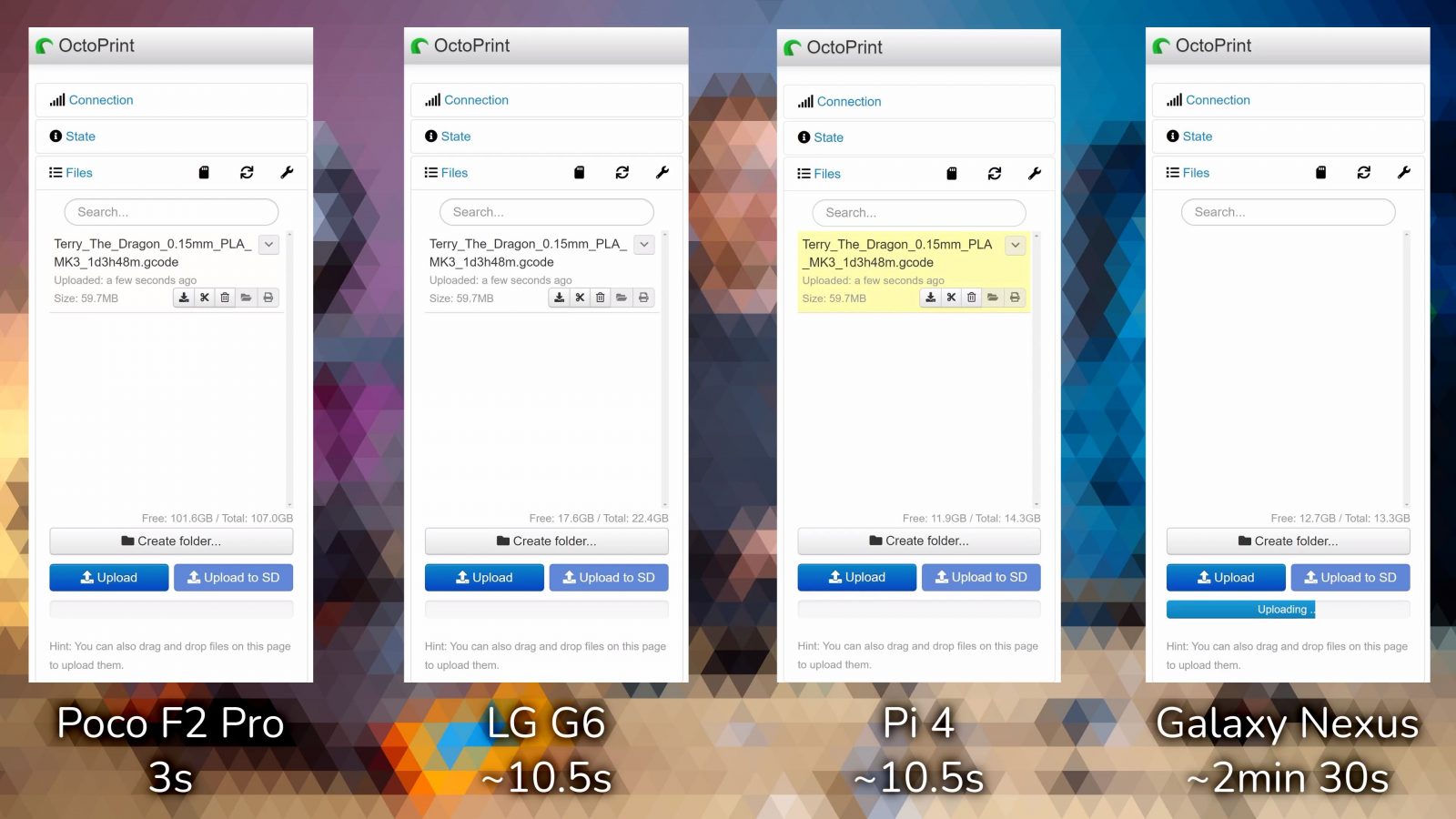
At present, for website load times, all three phones and the Raspberry Pi were almost instantaneous so I don't know if there's some caching going on or if OctoPrint's interface is just that well optimized, merely you even so feel the difference in how long, for example, the settings menus take to salvage and just in general snappy-ness.
Now, that might non have disqualified the Milky way Nexus yet, but because information technology's besides running a rather quondam version of Android – Cyanogenmod with Android 4.4 – the entire experience was rather buggy, too. I did get the camera feed working and the printer continued at the same time once, only betwixt the app crashing, non seeing the printer's USB interface, or just more often than not weirding out, it wasn't fun to use. But hey, this thing is x years former. I feel like anything just a scrap newer would actually work.
And if we expect at the experience you're getting with the 4-and-a-half-year-old LG G6 and the Poco F2 Pro from last yr, it's pretty much flawless. The only matter that I could find is that with the Poco, you tin can't use these passive adapters, and you lot take to utilize a dongle dock with the ability plugged in. The G6 works without the power plugged in, the Poco doesn't, that might be downwards to the broken accuse circuit, only one time yous figure that out, it'due south literally just like whatever other OctoPrint install. The interface is snappy, it'due south reliable, plugins piece of work, and with stuff like OctoLapse now having access to the phones' chief cameras, you actually get really crispy fourth dimension-lapses through that. It's a actually good experience.
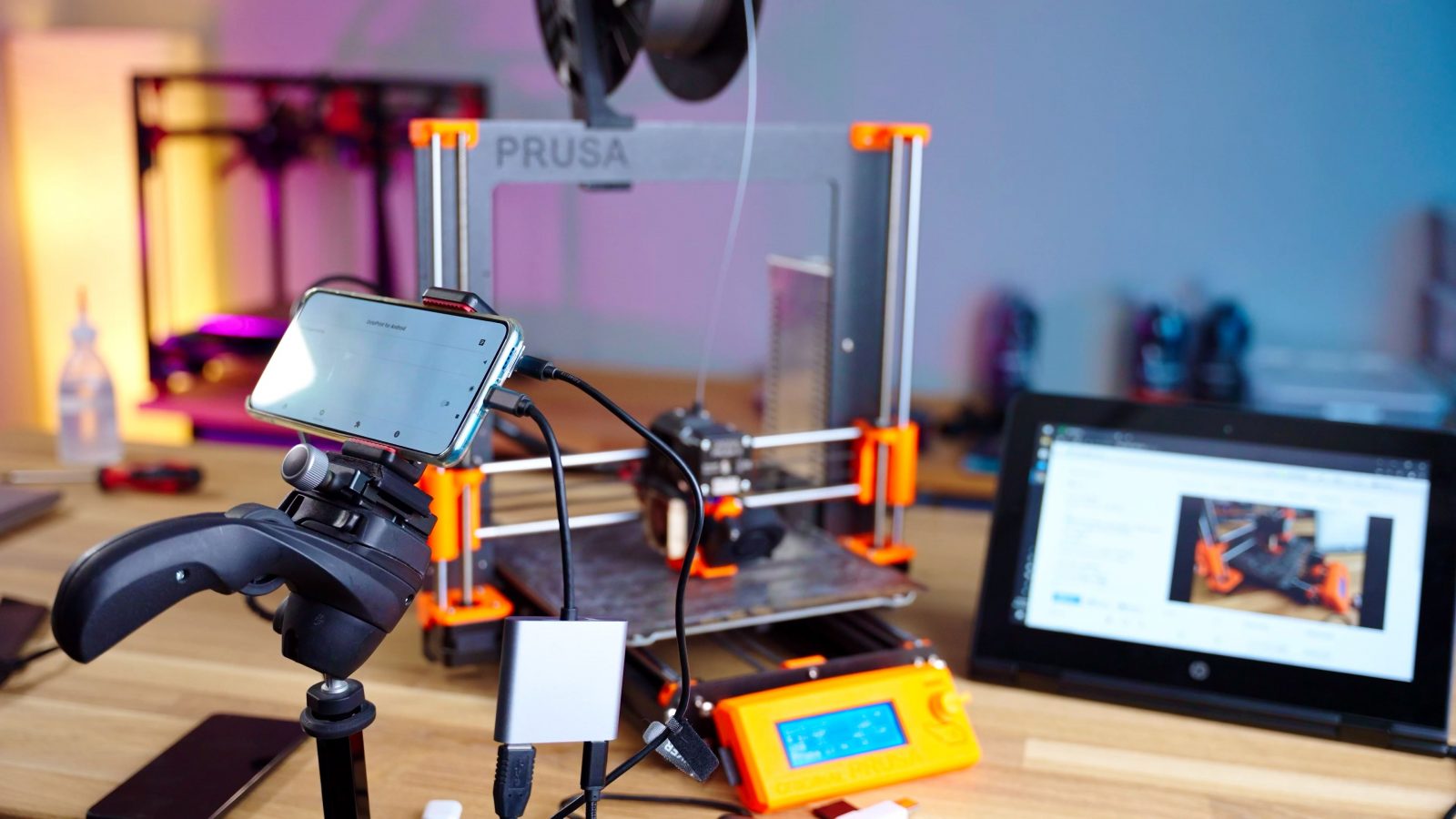
I tried if there would be hiccups when y'all do stuff in the UI, or upload files while a print is going, but it's just really smooth everywhere.
And as a bonus, you can even open up a browser on the phone, bespeak it to localhost:5000 and y'all go the total OctoPrint interface, or a mobile-friendly 1 if you use the Touch UI plugin. You could fifty-fifty apply a tablet and simply have that be your main printer touchscreen.
I think Octo4a is a really good solution, to the point where honestly, if you're just looking to get OctoPrint running, I would rather buy a cheap Android phone now than mess around with the Pi, printing a case for that, trying different USB cable because some aren't reliable and so on. Octo4a works well, information technology's pretty easy to set up, in the best instance, you don't even have to buy anything for it and give a 2nd life to a used device. I like that.
If y'all similar that, as well, make sure to support OctoPrint and Octo4a – they're projects that give abroad their work for free, and then show them some appreciation if you find them useful.
Products shown (on Amazon):
MicroUSB Y-cable
USB-C dongle dock
Suitable charger
Raspberry Pi4?
Phone clamp
Magic arm
Superclamp
All my video gear
💙 Enjoying the videos? Support my work on Patreon!
Production links are affiliate links – I may earn a commission on qualifying purchases (at no extra cost to you)
You can back up me without spending a unmarried penny!
Source: https://toms3d.org/2021/11/05/octoprint-on-android-with-octo4a/

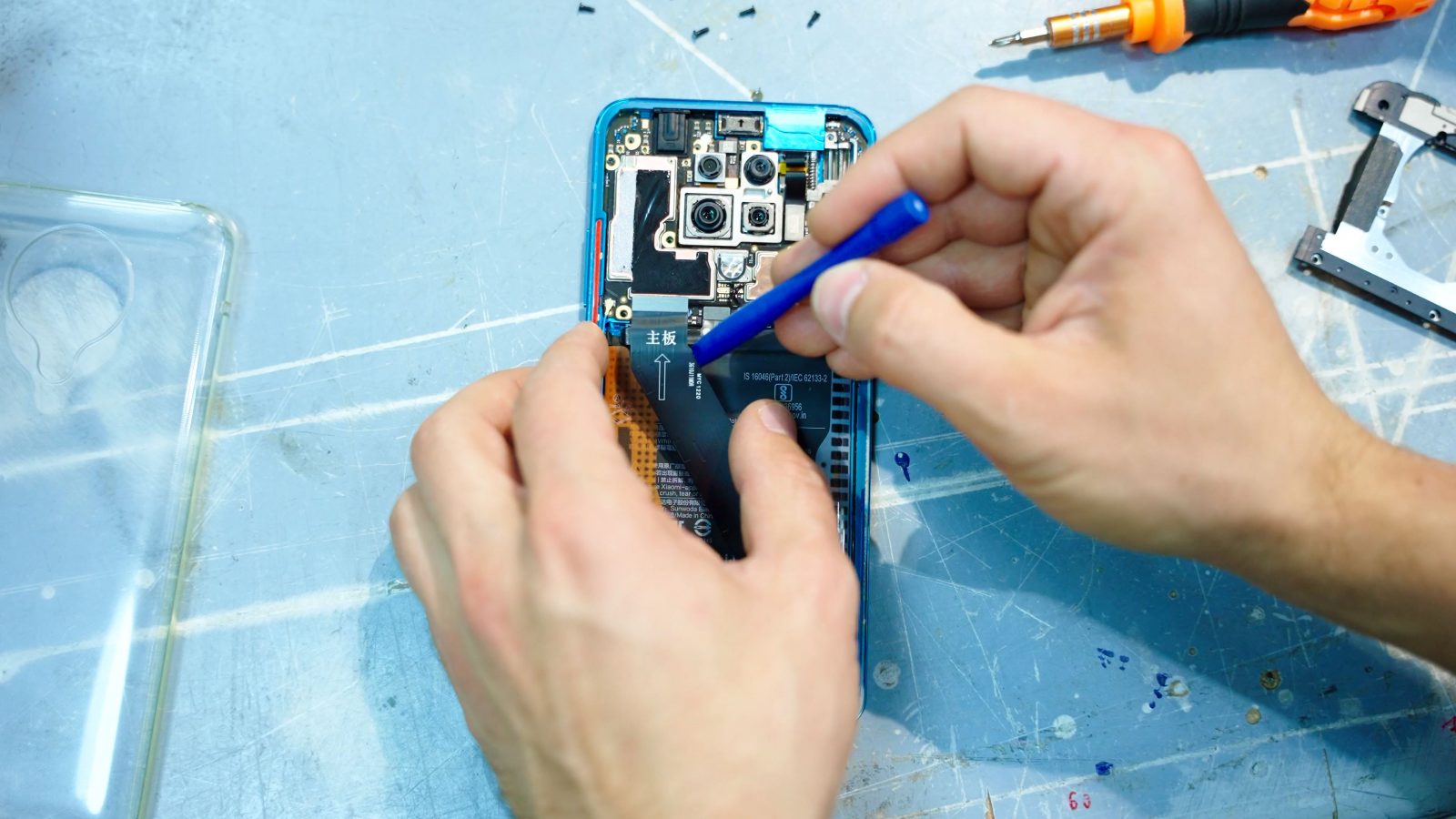
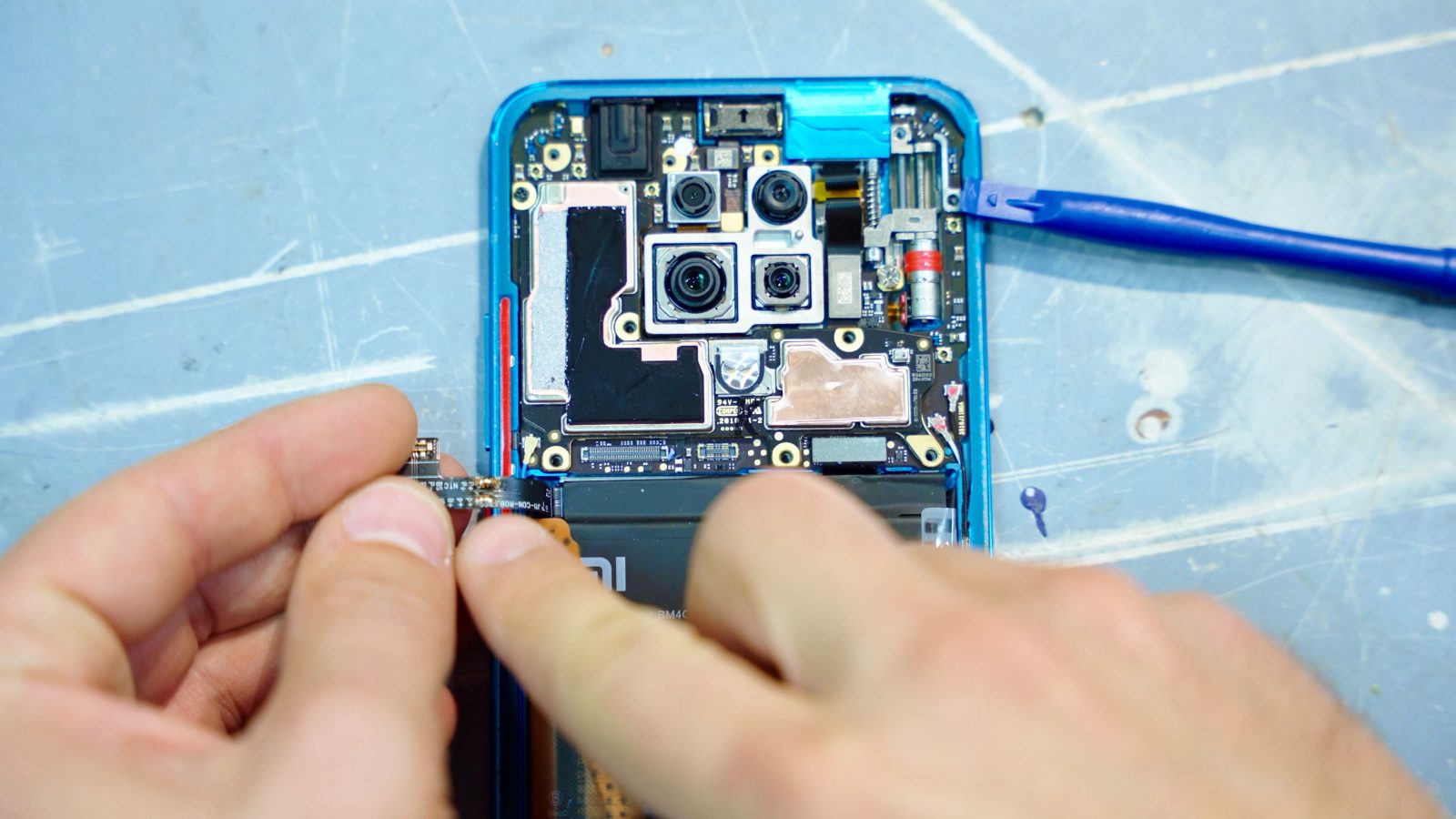
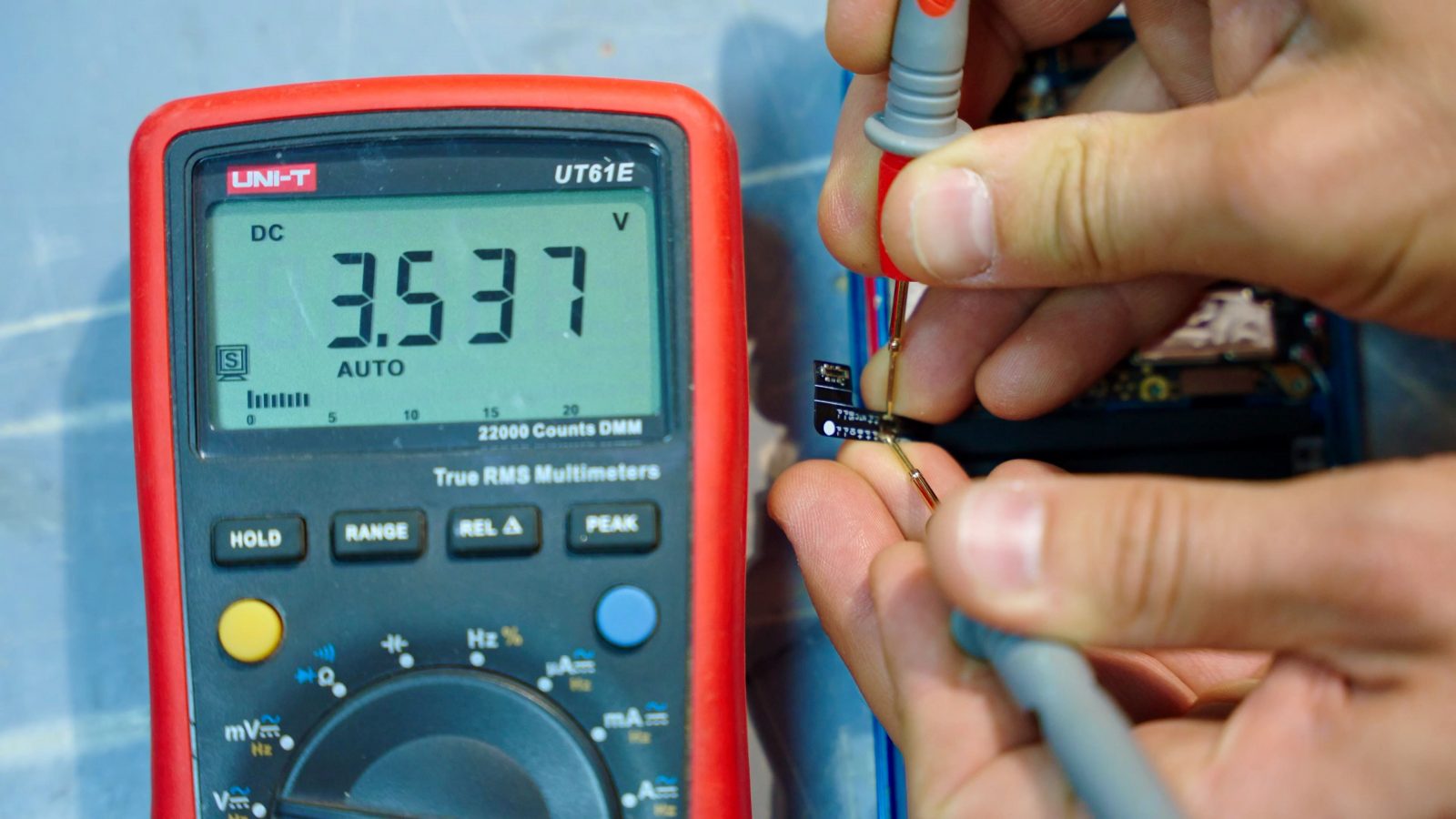
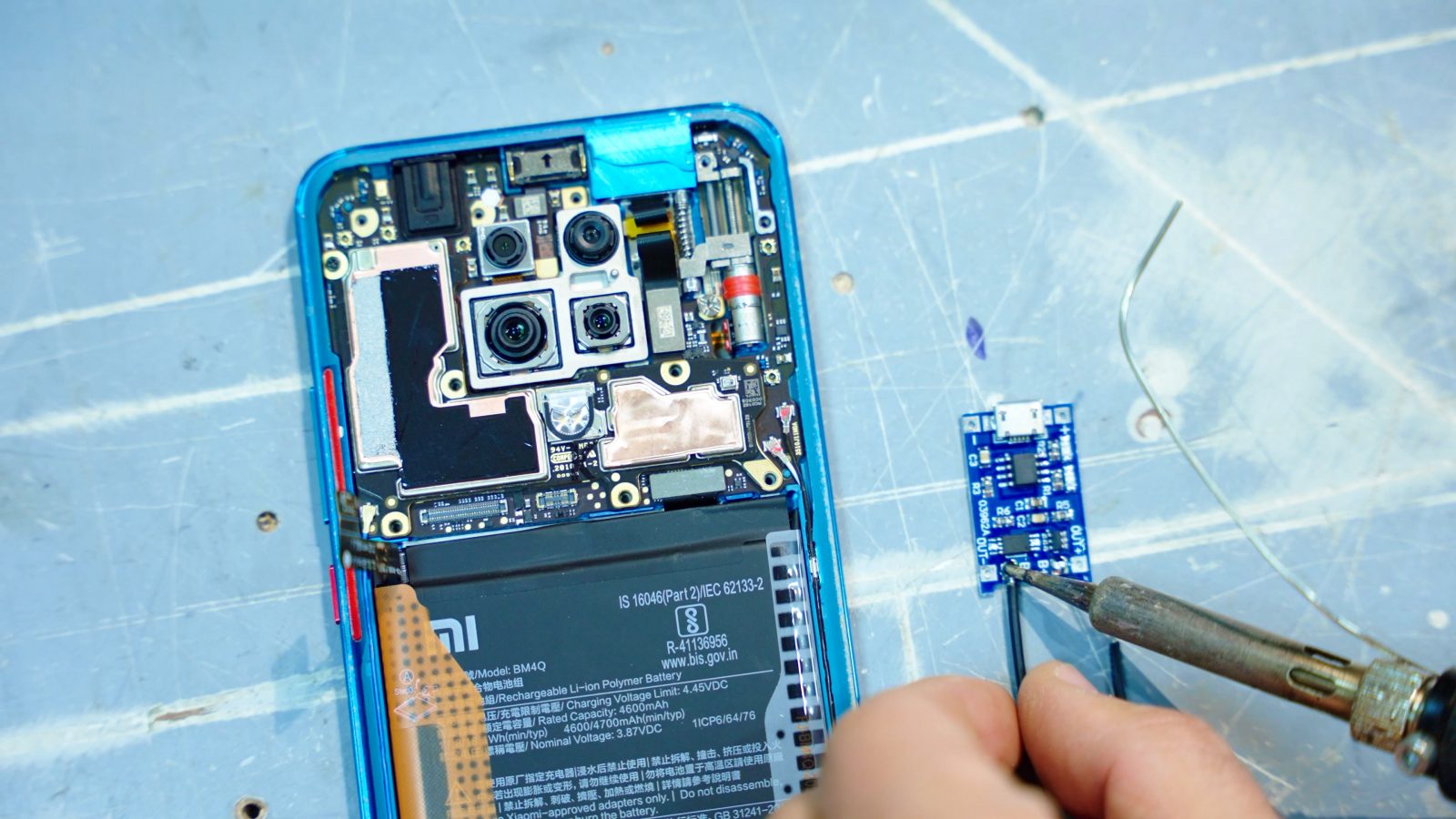
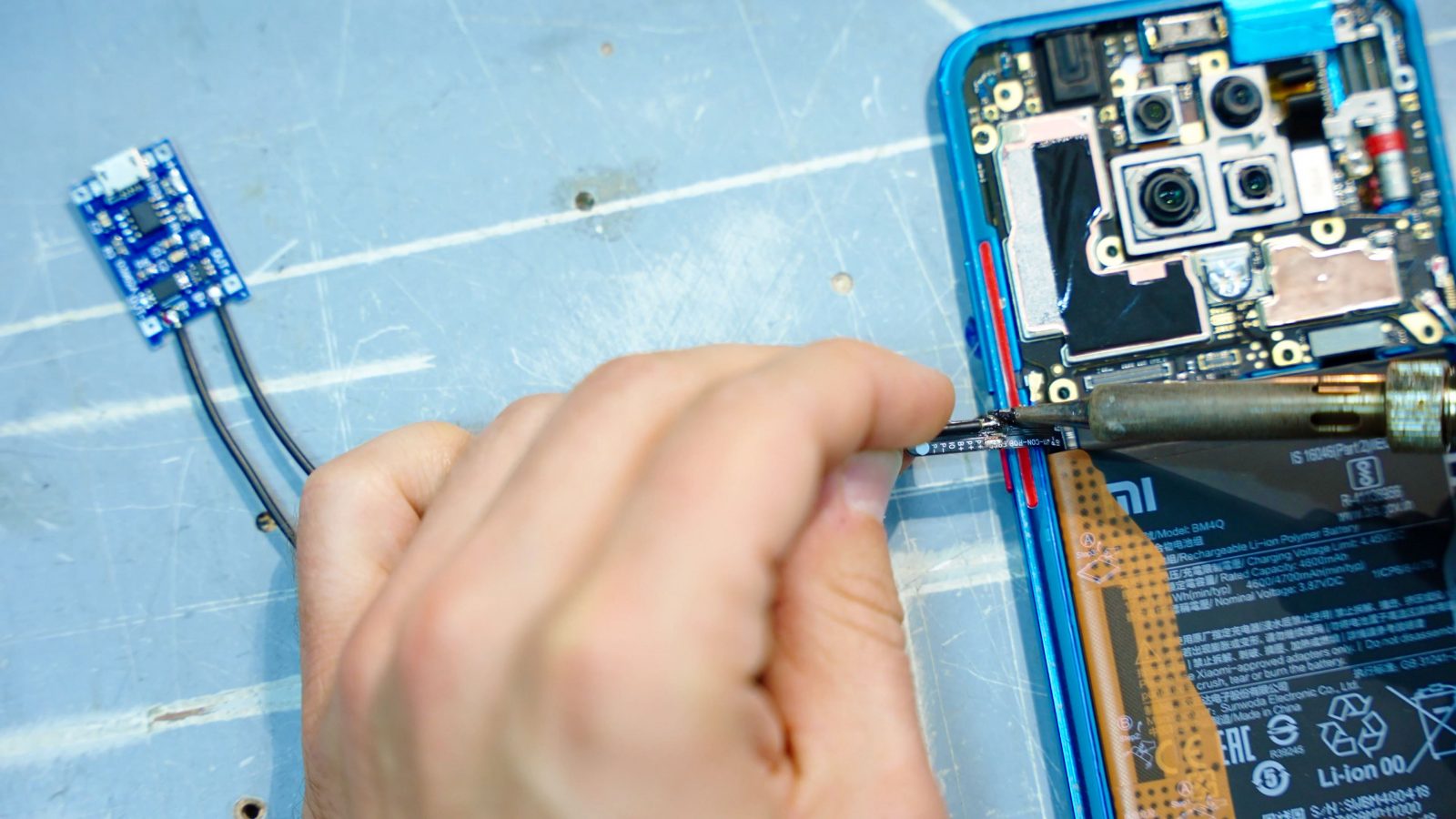
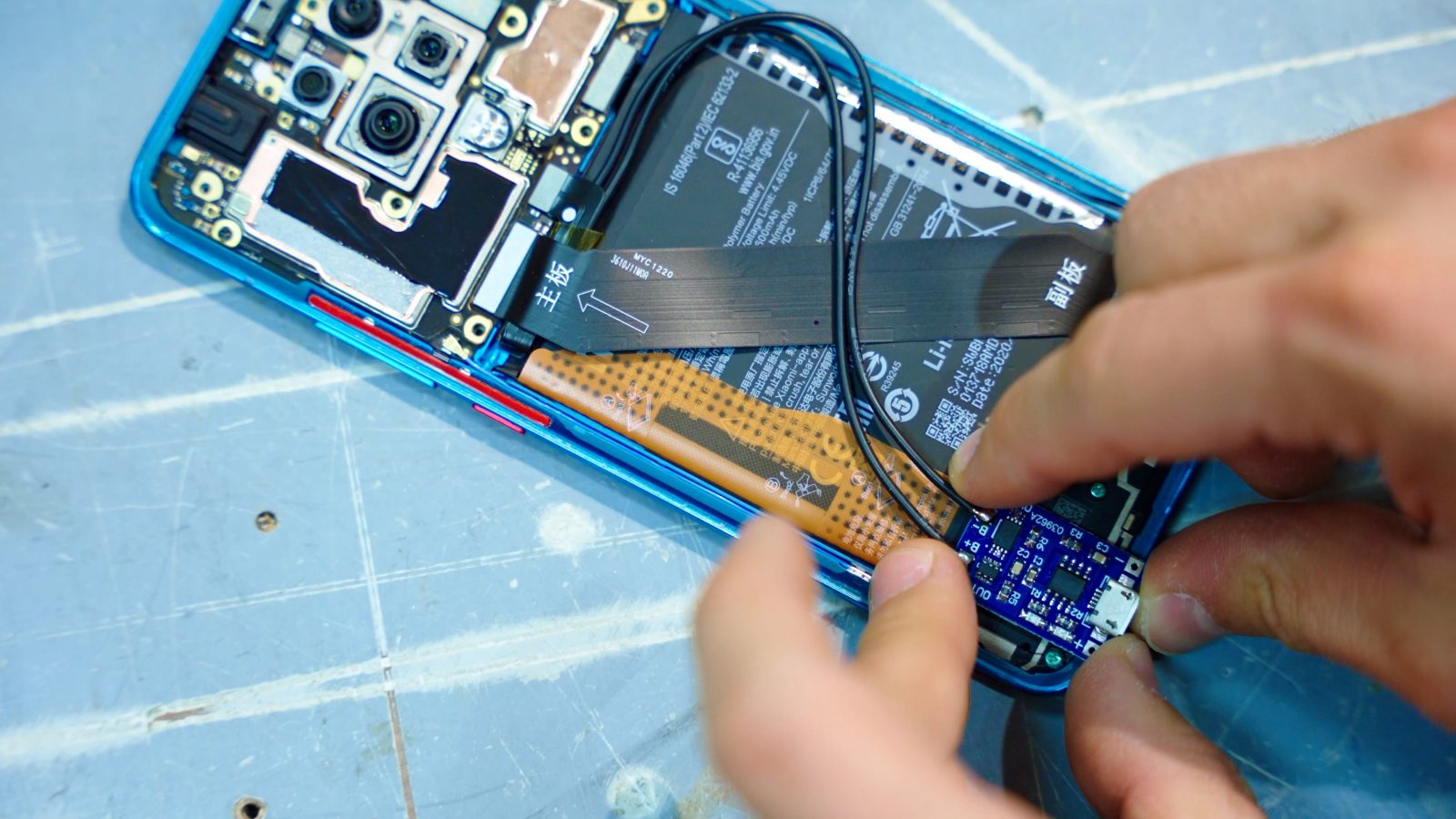
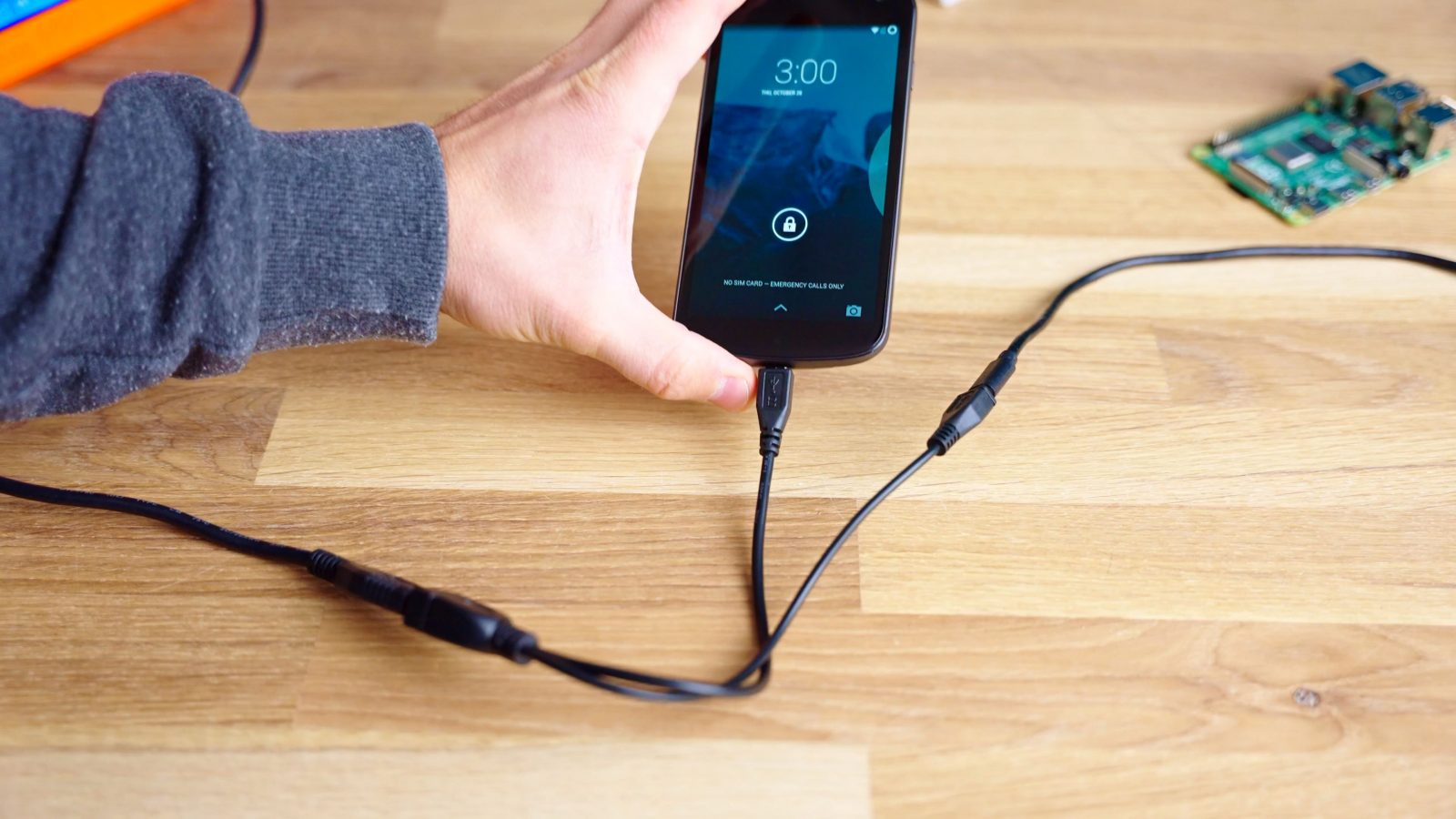
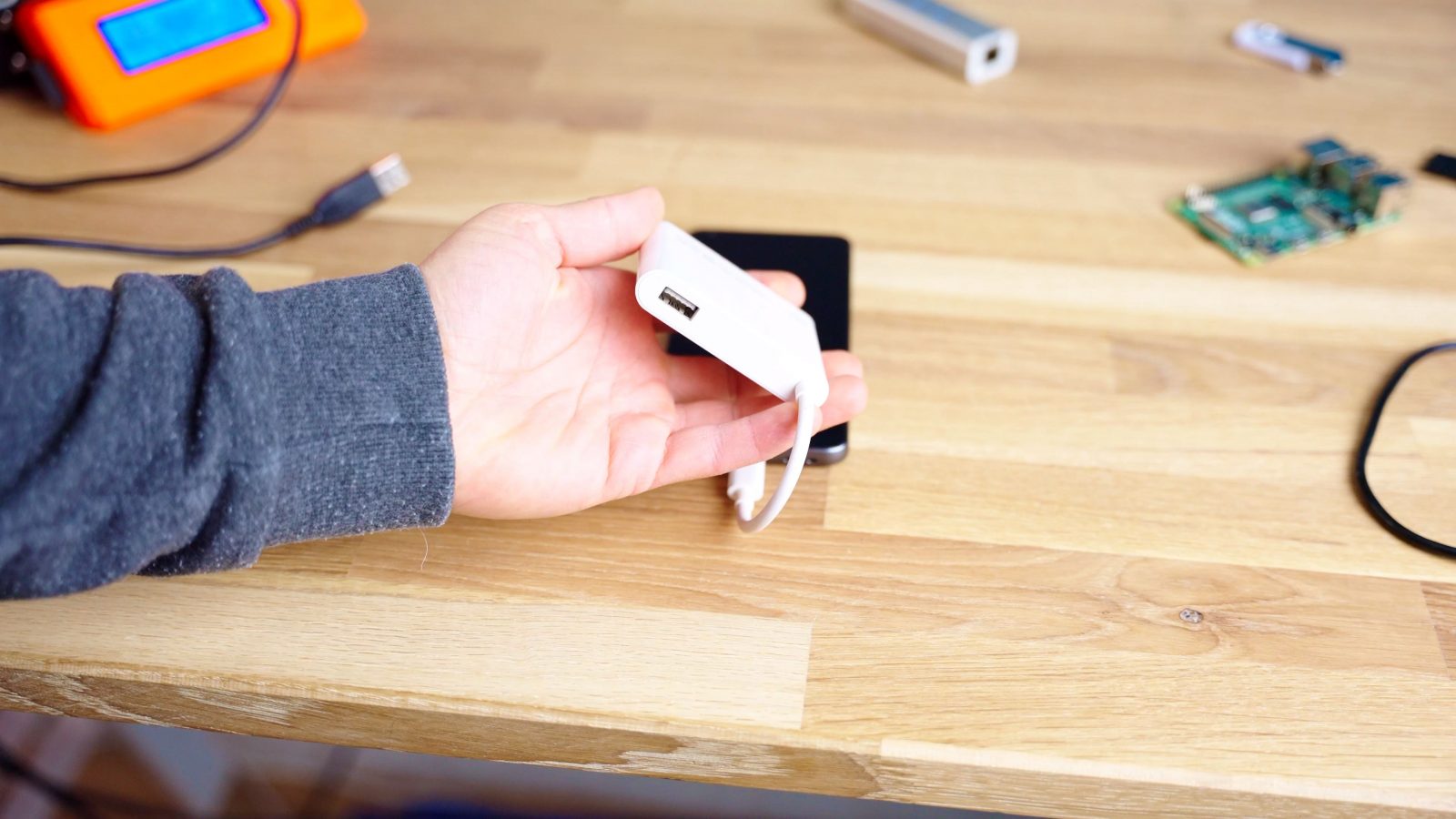
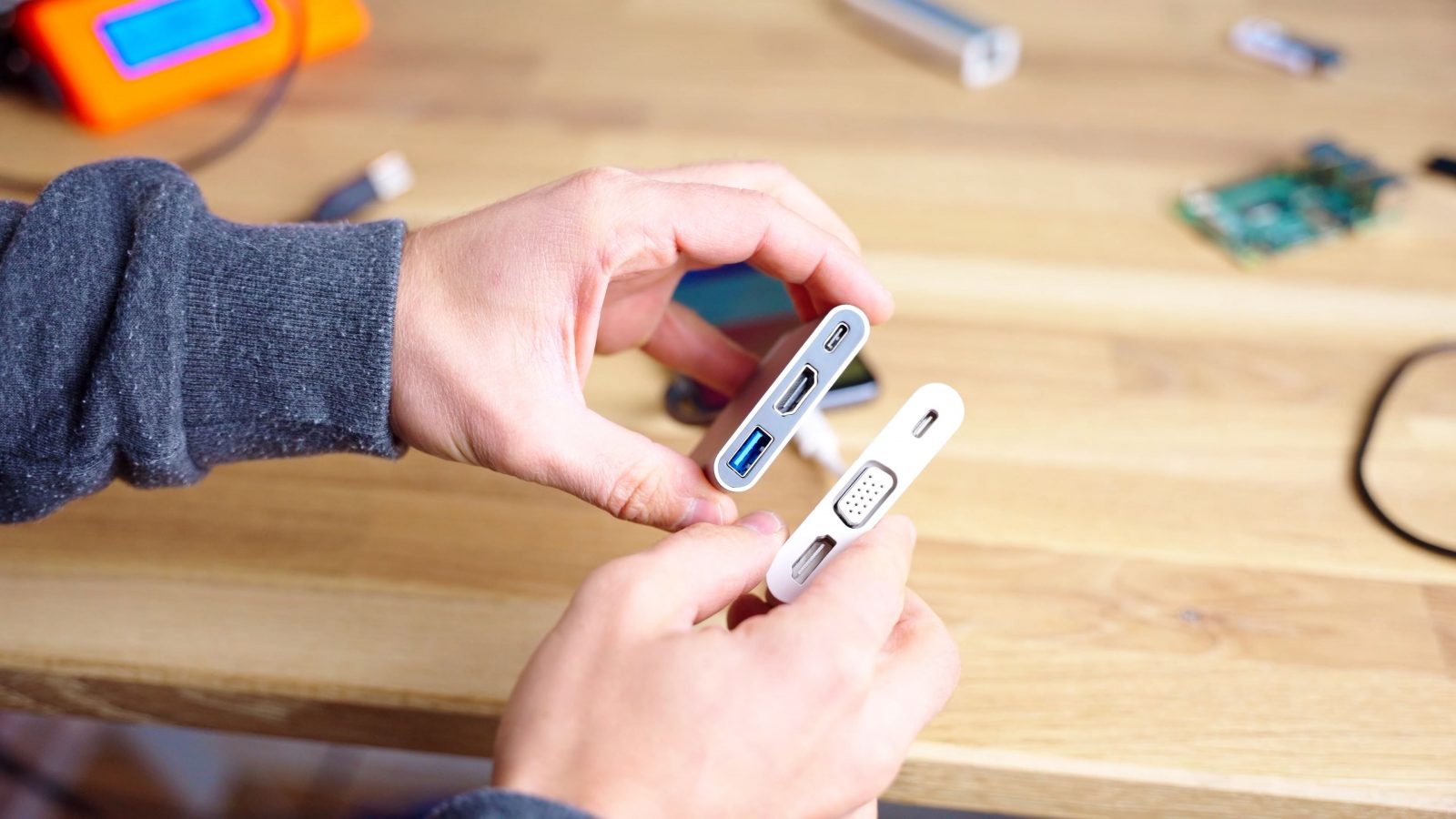
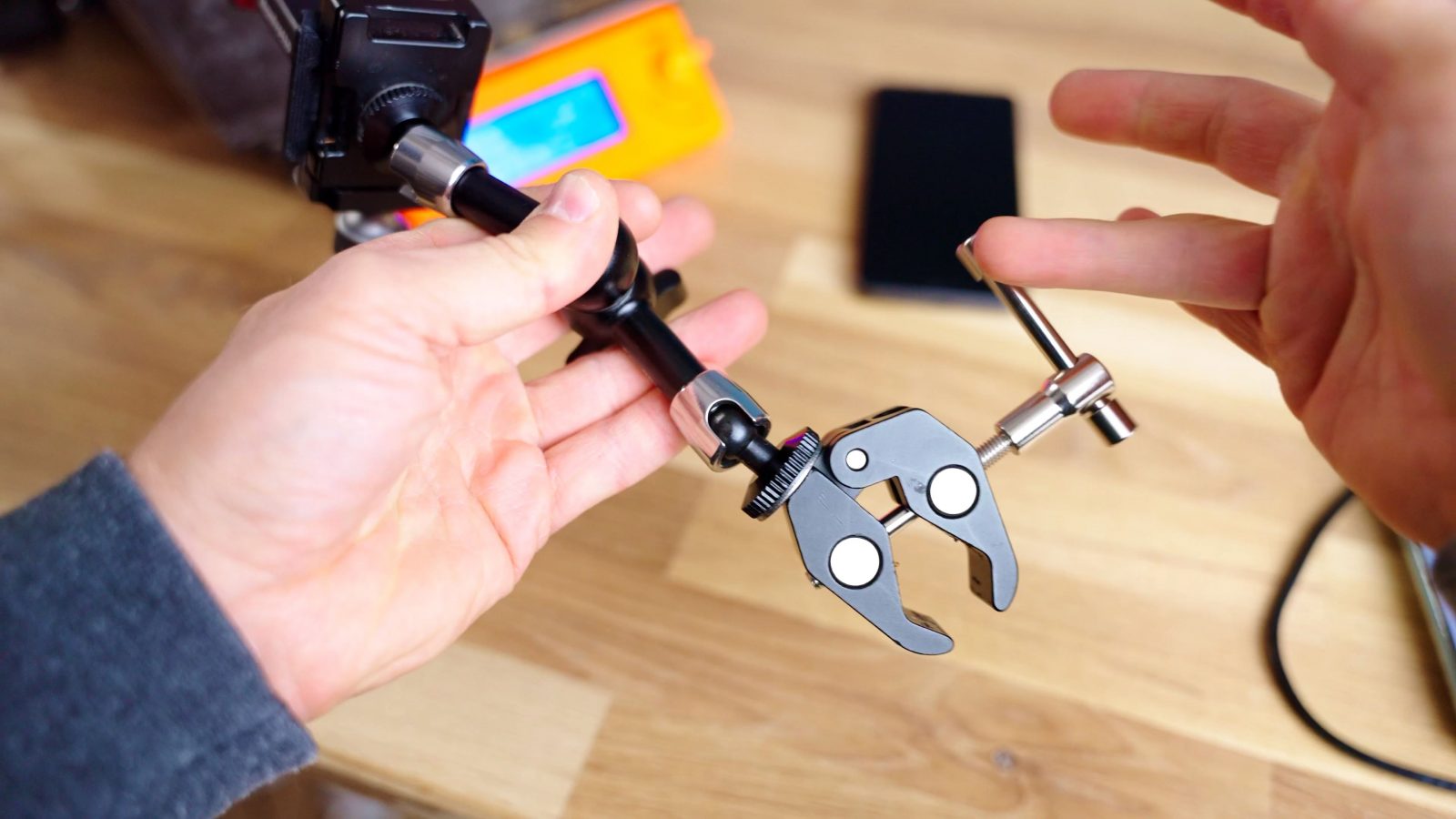
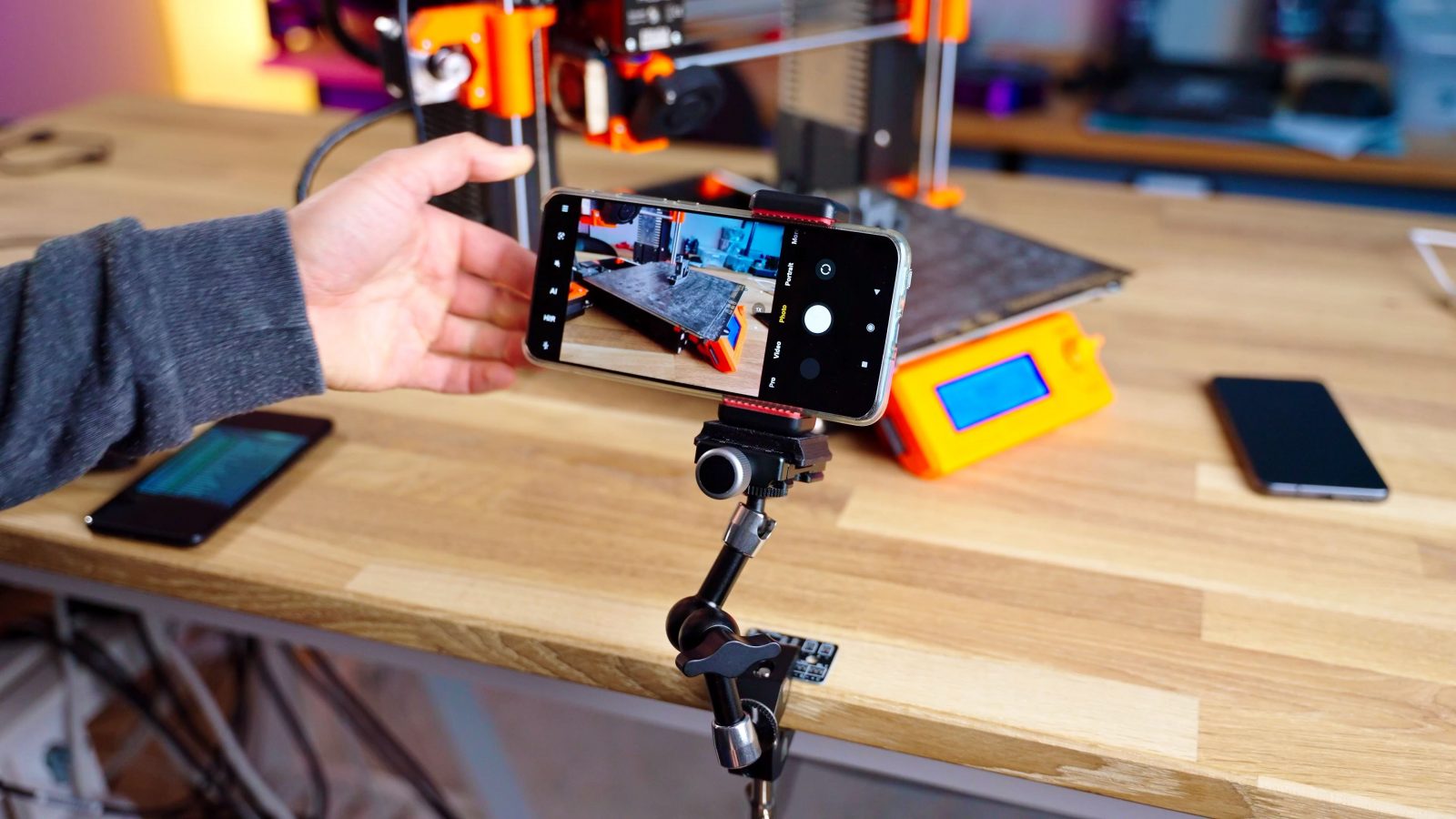
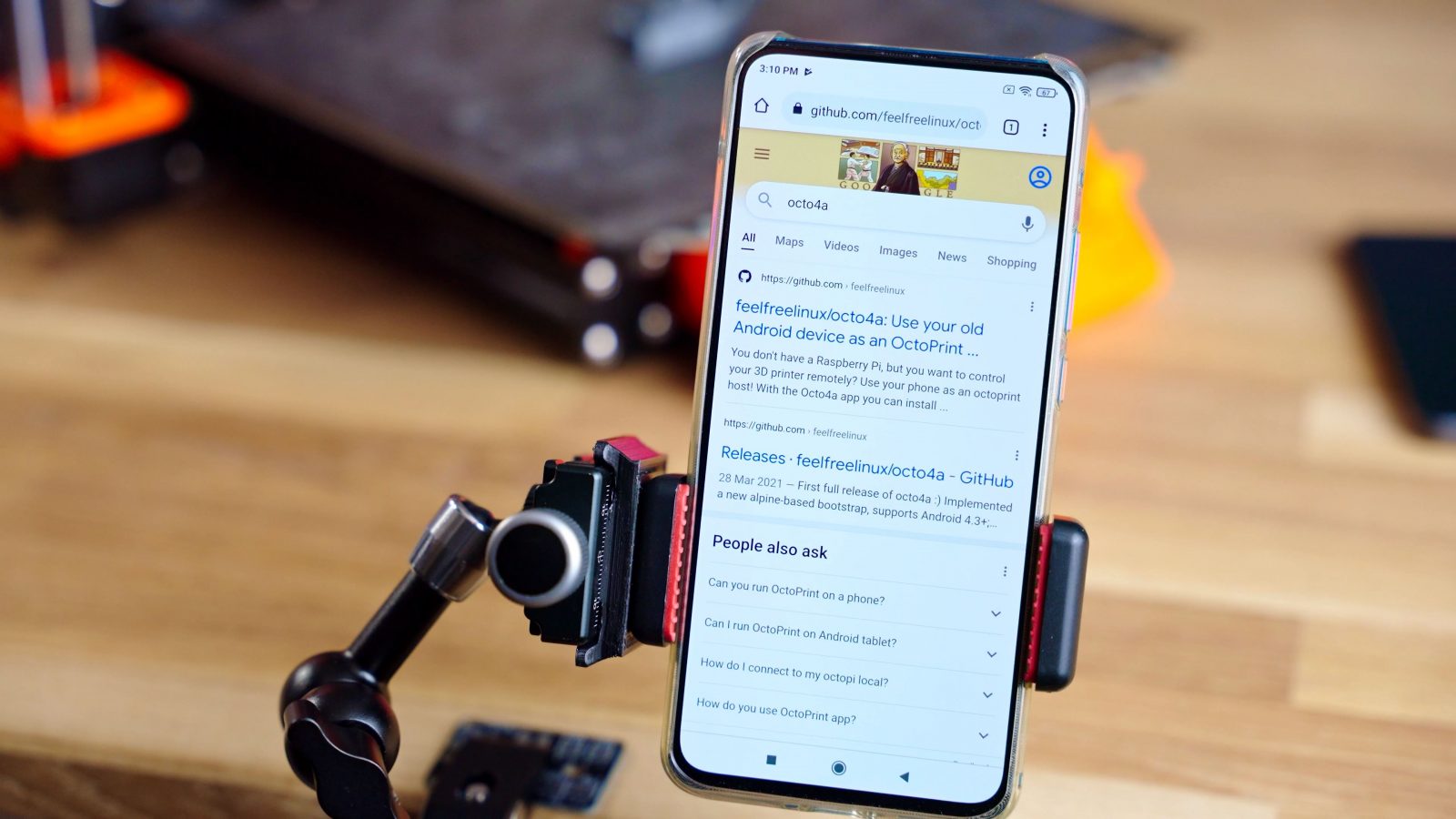
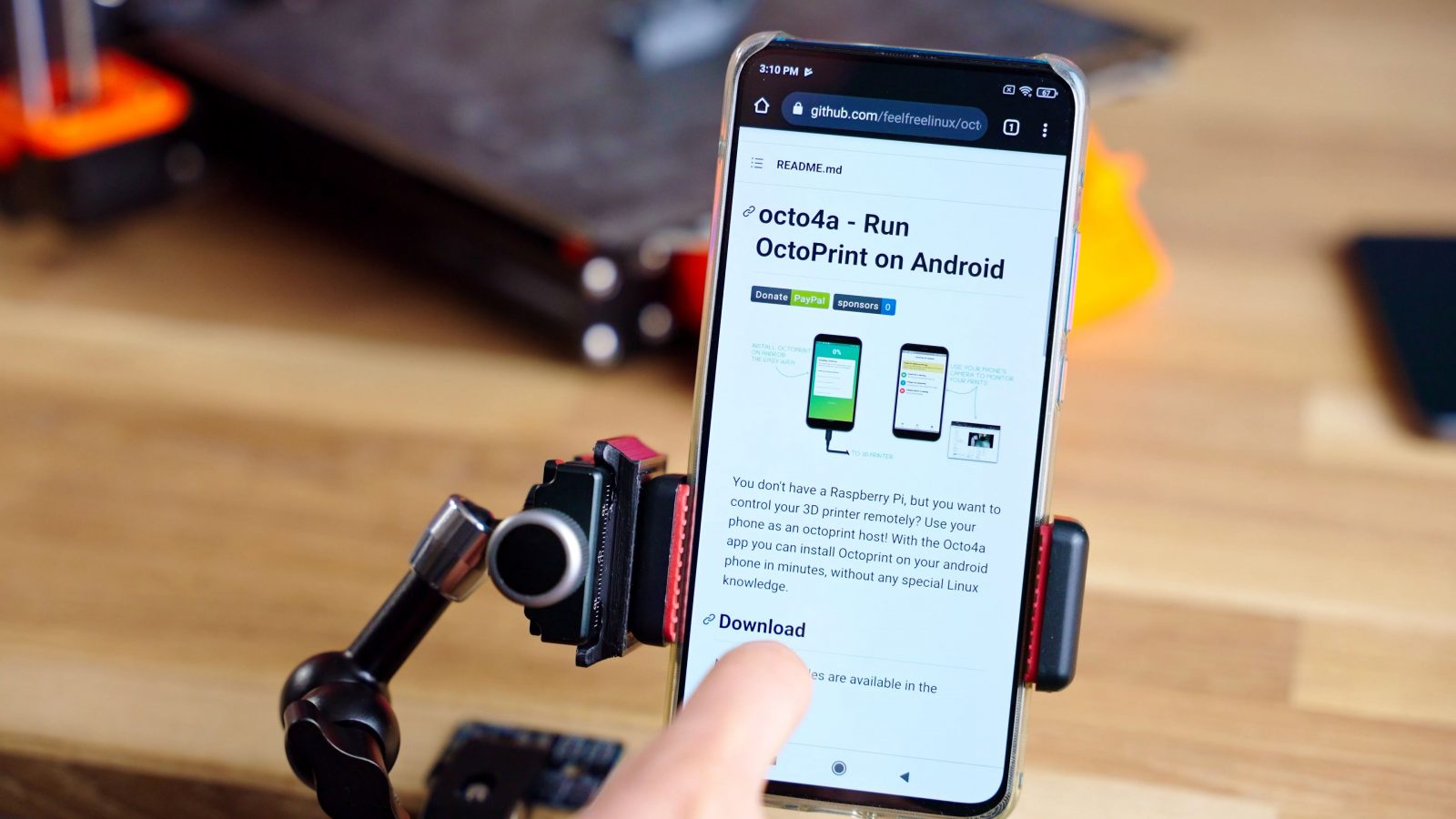
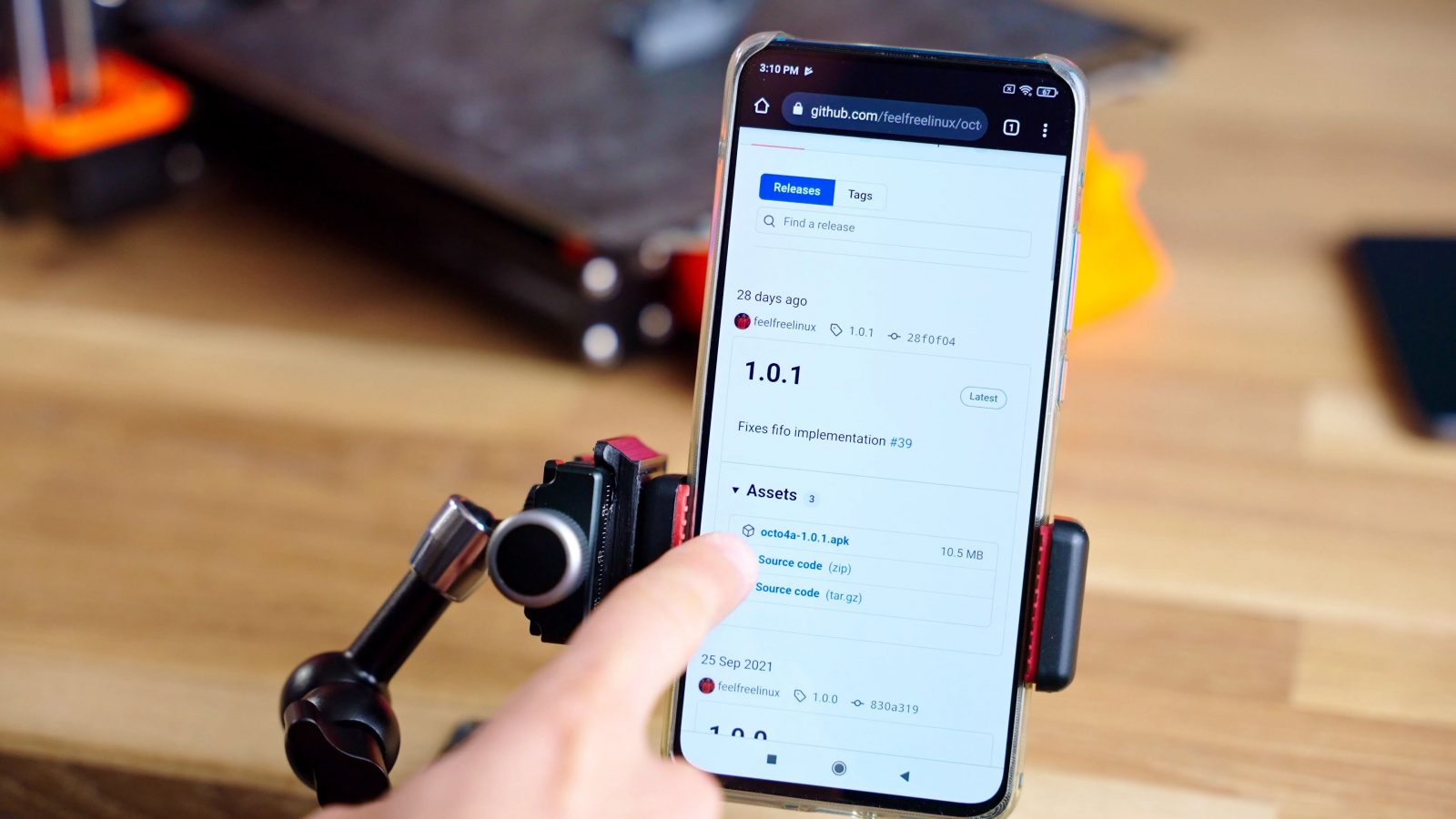
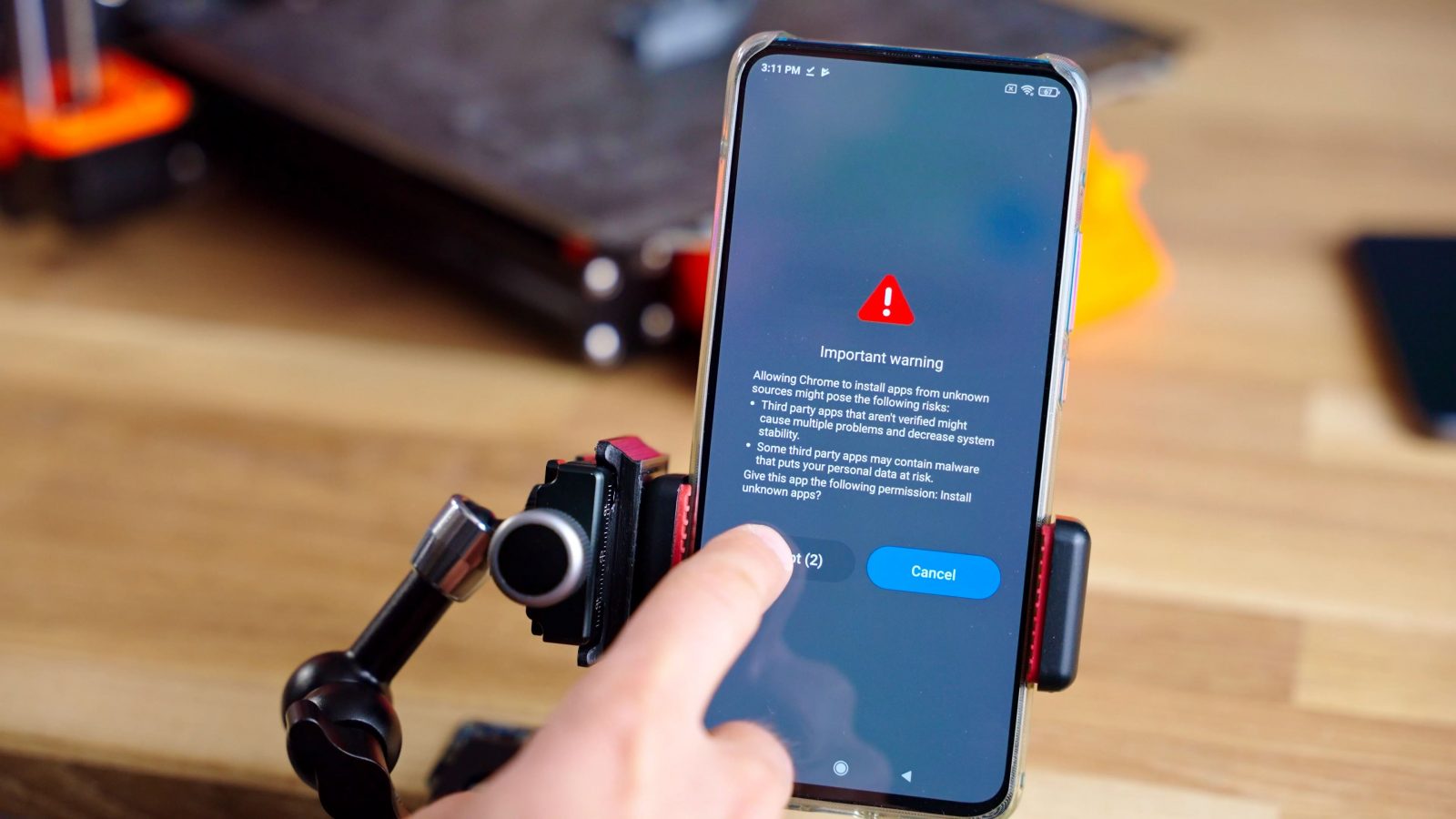
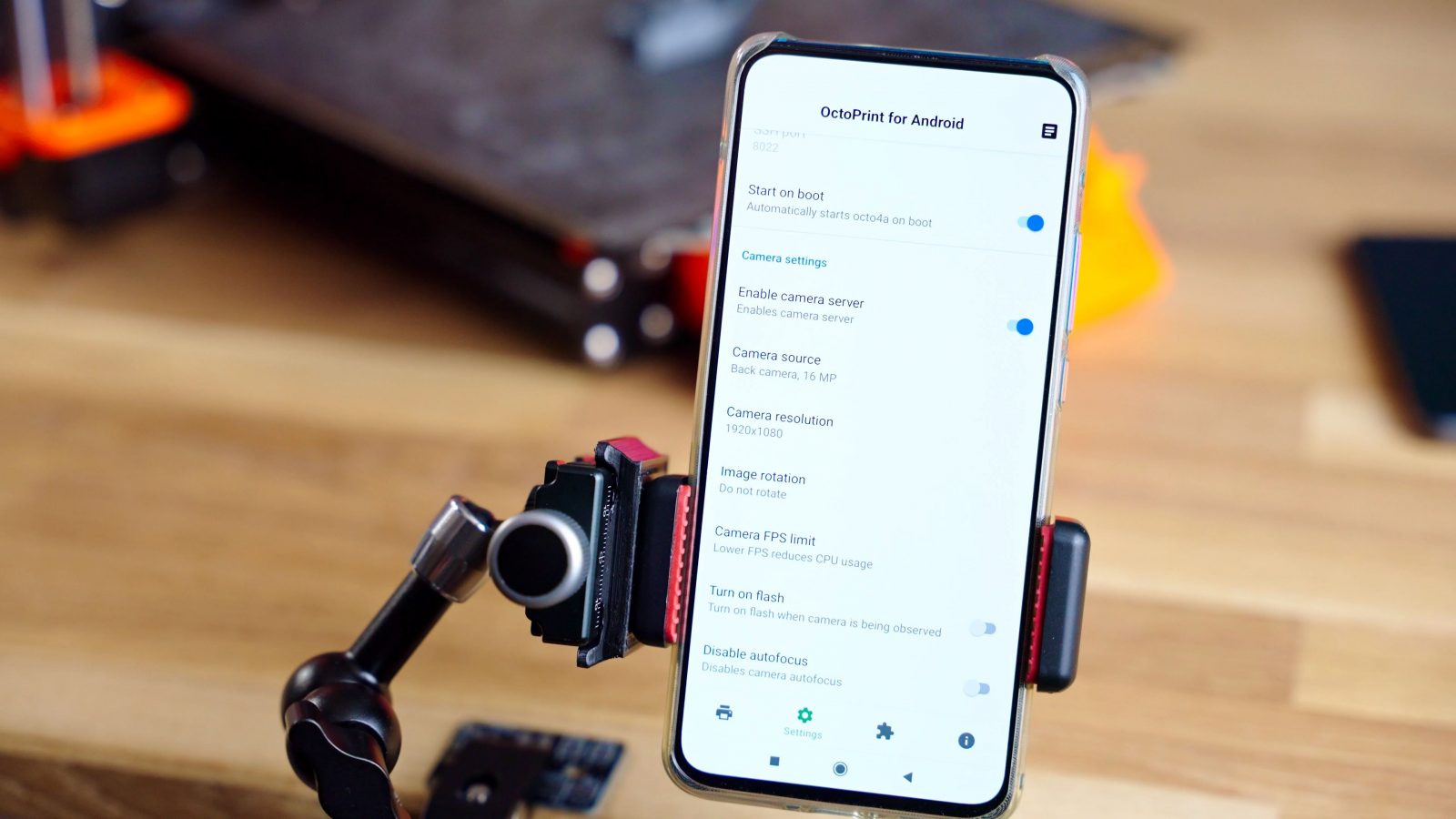
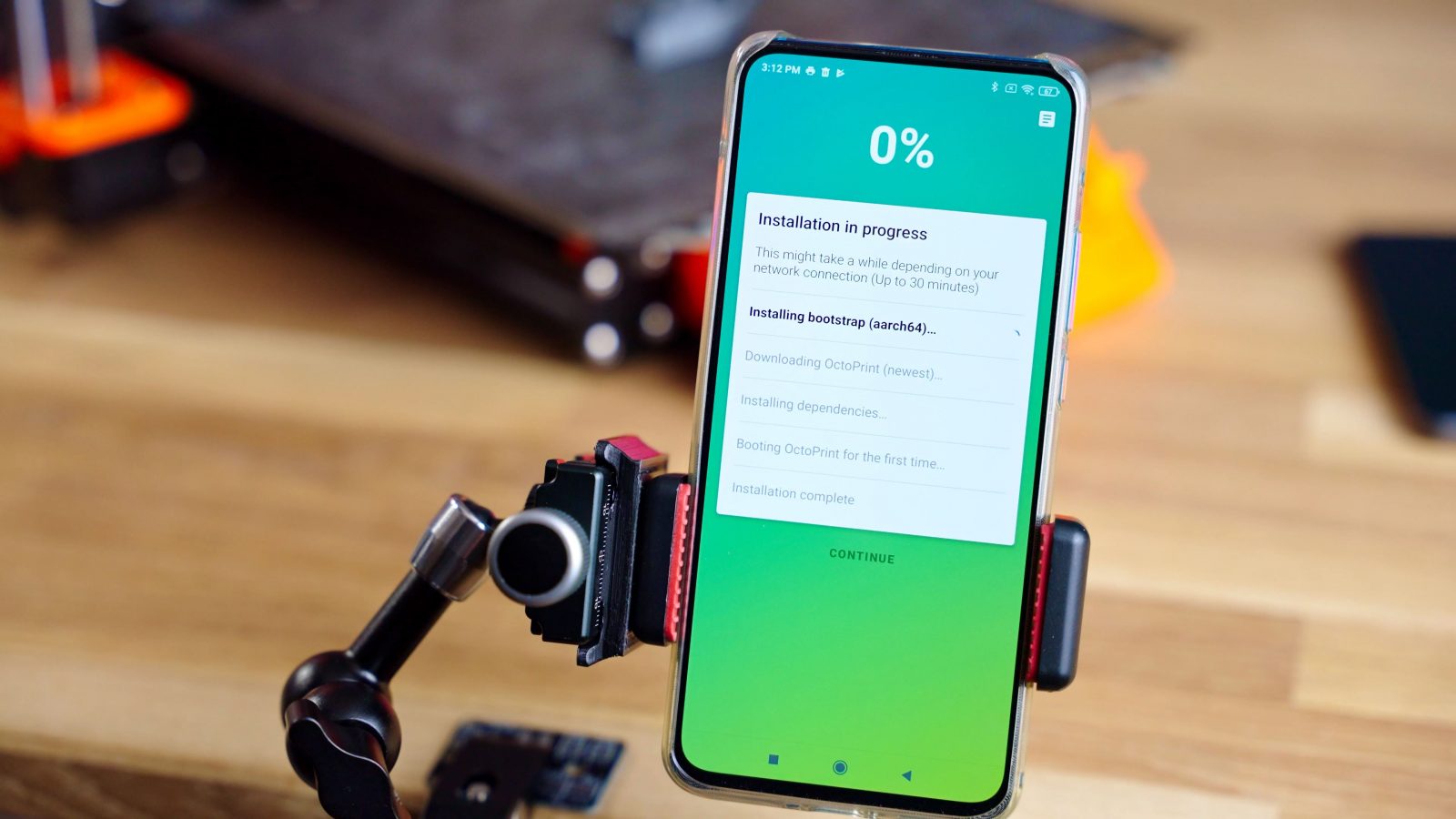
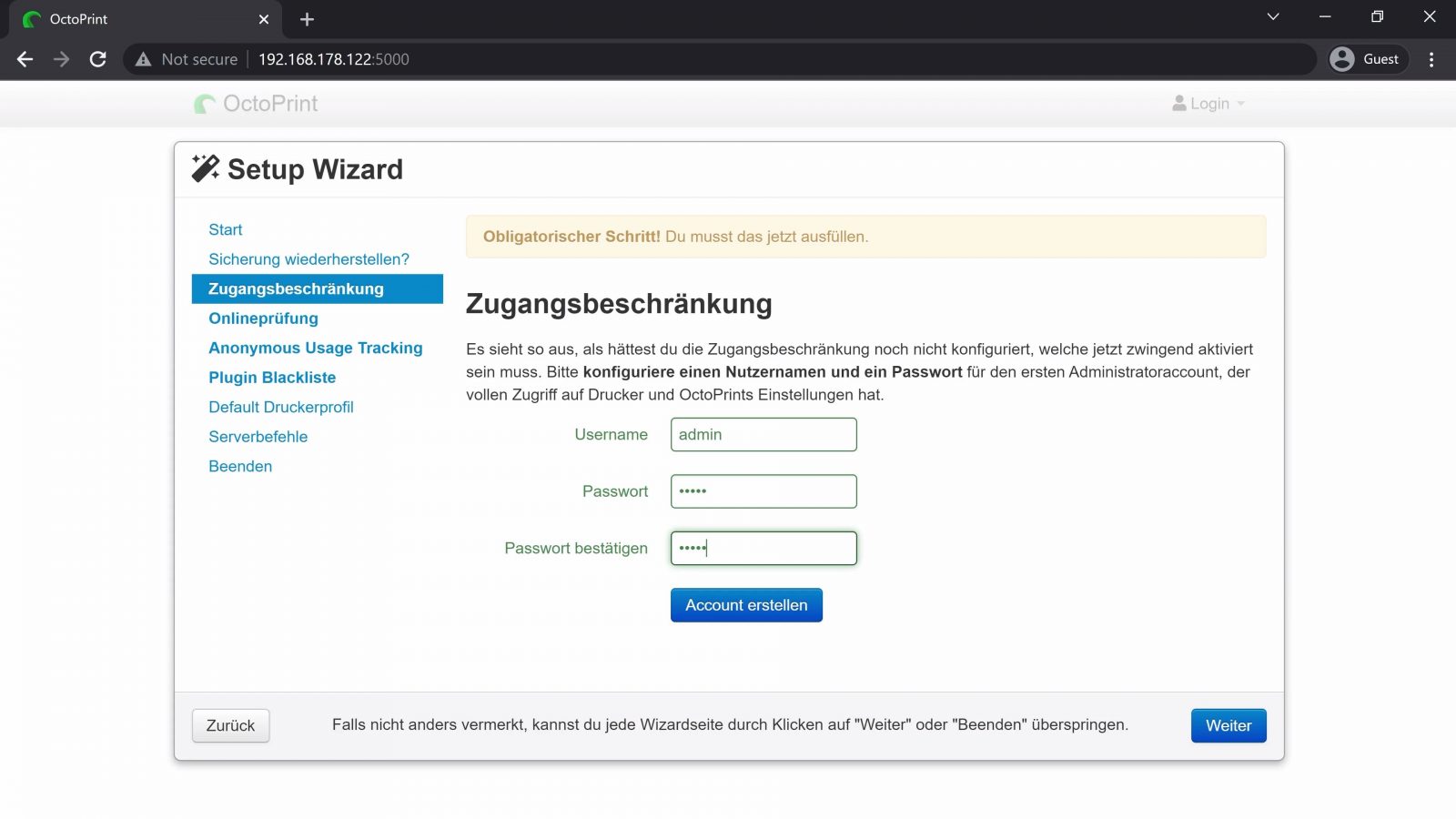
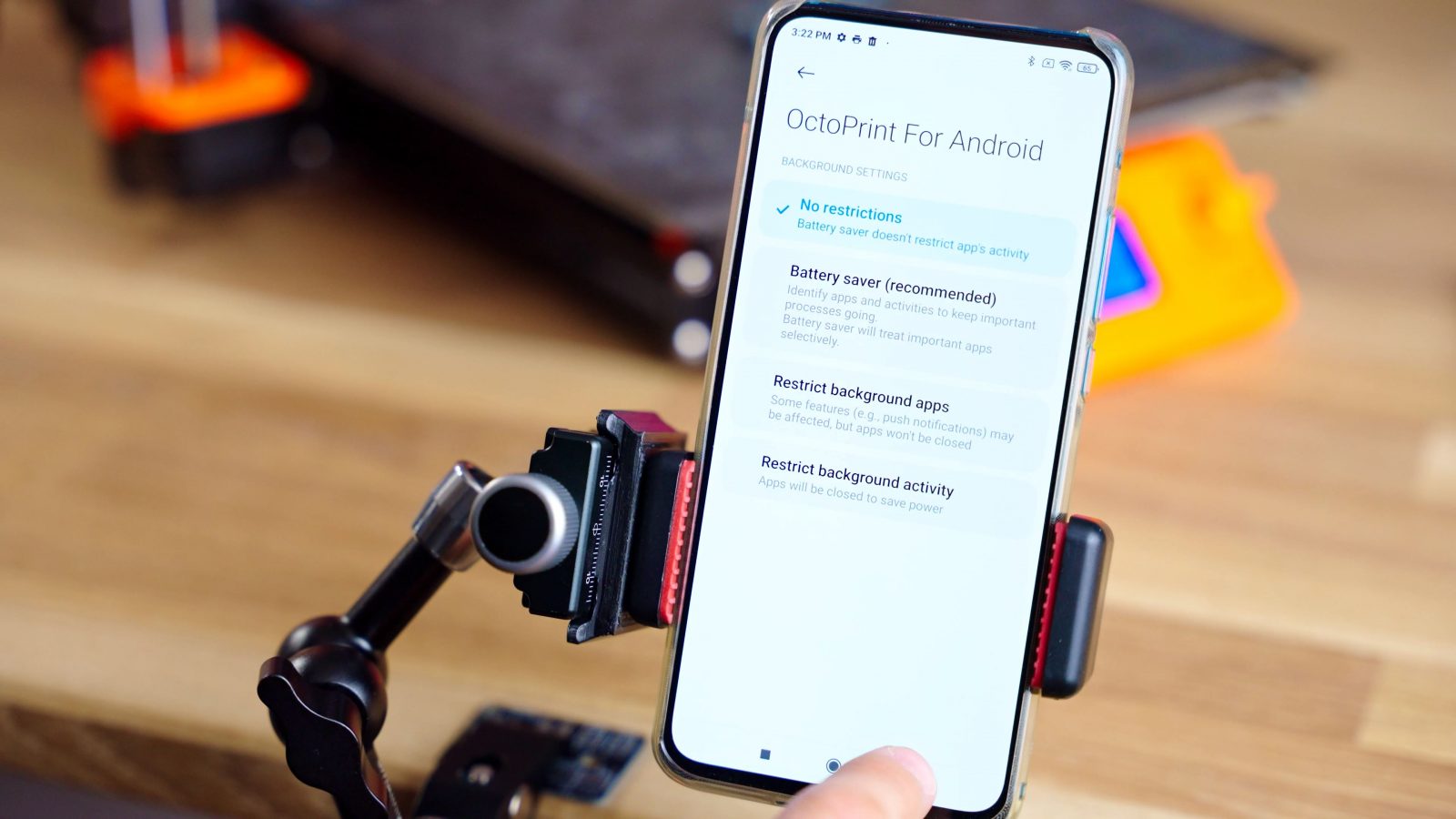
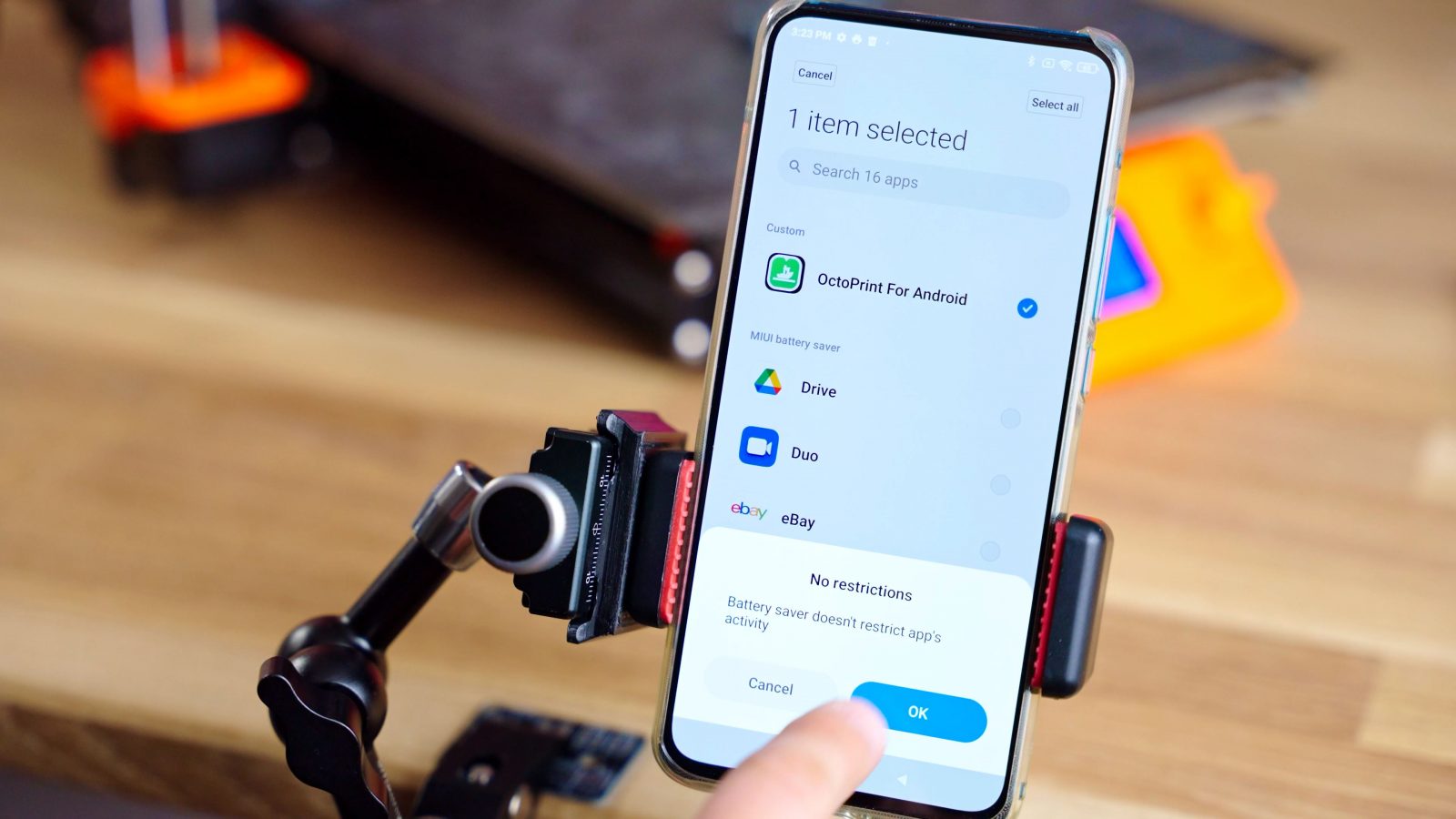
0 Response to "How Often Do You Have to Upload Users in Toms"
Post a Comment